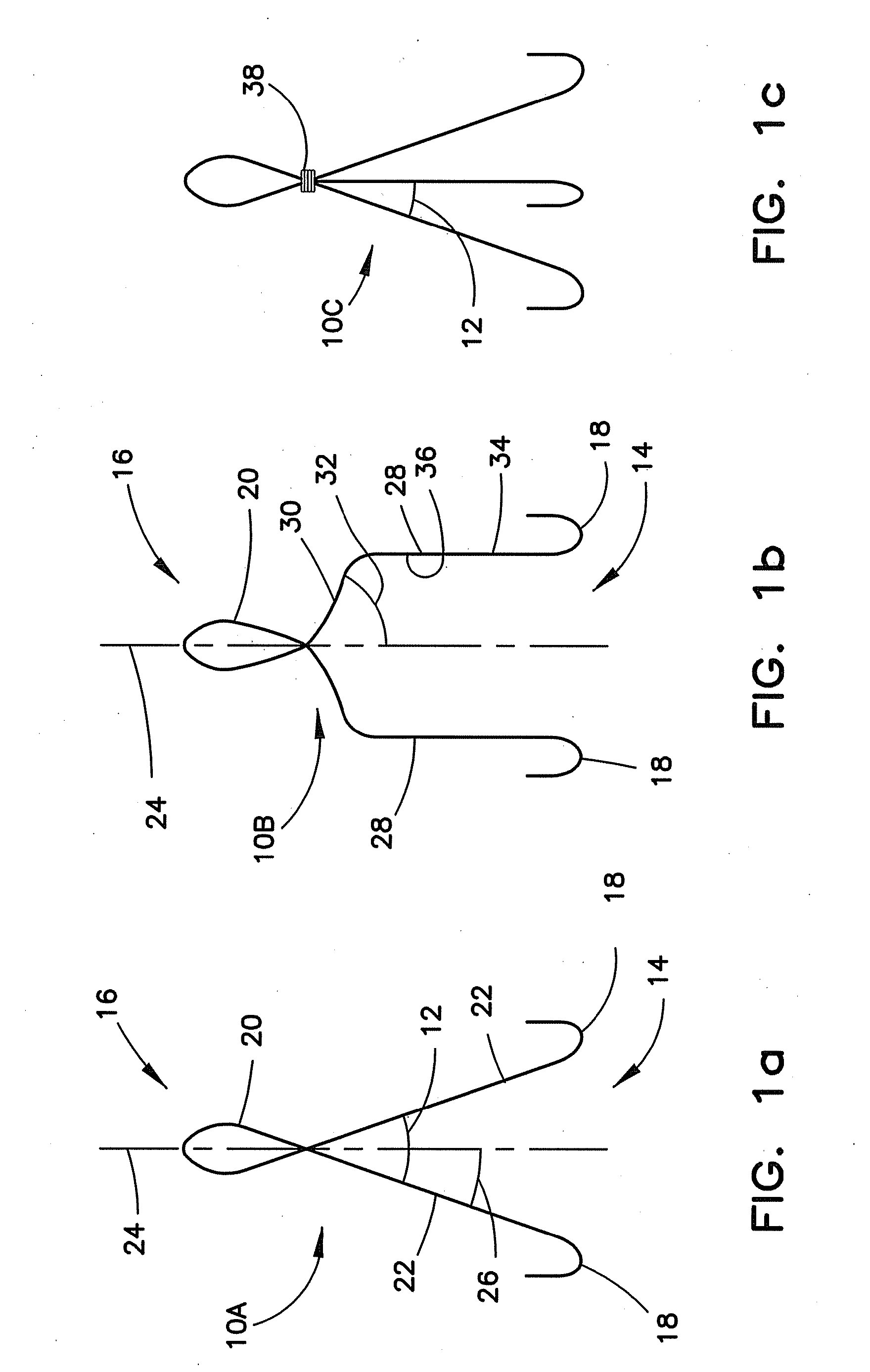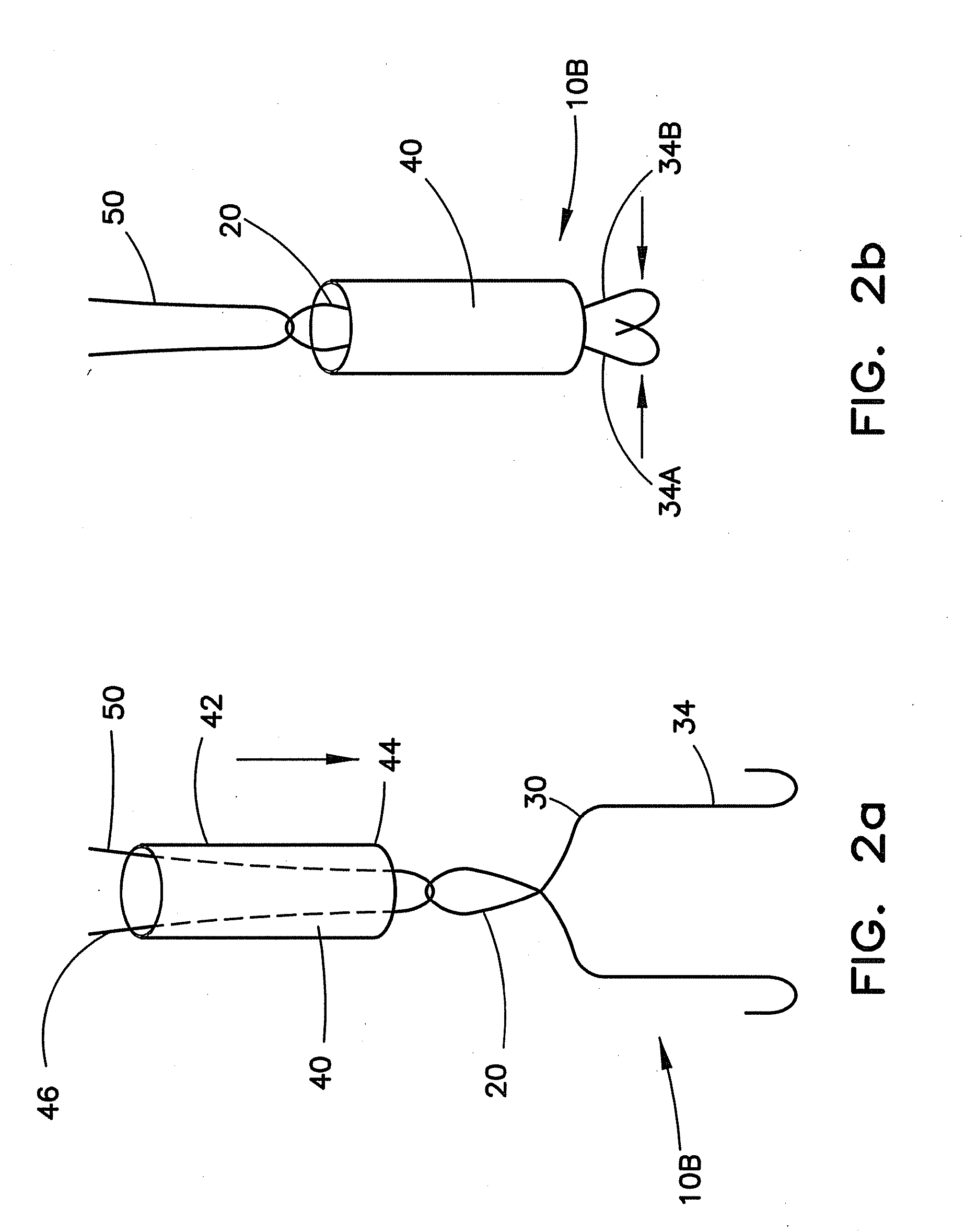Vascular closure device
a closure device and vascular technology, applied in wound clamps, medical science, surgery, etc., can solve the problems of requiring patients, affecting the healing effect of wounds, so as to reduce the spacing
- Summary
- Abstract
- Description
- Claims
- Application Information
AI Technical Summary
Benefits of technology
Problems solved by technology
Method used
Image
Examples
first embodiment
[0034]In each of the variations of the first embodiment, the closure device includes a plurality of hook members 12 having a first end 14 and a second end 16 to form the anchor body. The first end 14 is configured to engage the tissue surrounding the opening in the body vessel. The second end is configured to receive a retraction member as described below.
[0035]In FIG. 1a, the closure device 10A includes the hook members 12 that are shown as one continuous wire formed with hooks 18 at the first end 14, an eyelet 20 at the second end 16 and a substantially straight member 22 therebetween. The straight member 22 can be angled from a central axis 24 with an angle 26 suitable to permit movement away from the central axis 24 to position the hooks 18 to contact the surrounding area of the opening. In FIG. 1b, the closure device 10B includes the hook members 12 that are shown as one continuous wire formed with hooks 18 at the first end 14, an eyelet 20 at the second end 16 and a bent membe...
second embodiment
[0051]In FIG. 6a, the anchor body of the closure device 210A includes the hook members 212 that are shown as discrete wires formed with hooks 218 at the first end 214, a pointed end 220 at the second end 216 and a middle region 222 therebetween. The middle region 222 of the hook members 212 can each be attached at an attachment point 223 by wrapping the hook members212 around each other, welding, soldering, or the like. The pointed end 222 can include additional material to form a tabbed end 225 for better engagement with a plug-like member. The portion of the middle region 222 that is near the first end can be angled from a central axis 224 with an angle 226 suitable to permit movement away from the central axis 224 to position the hooks 218 to contact the surrounding area of the opening. In FIG. 6b, the anchor body of the closure device 210B includes a similar structure as the closure device 210A except an eyelet 228 can be located between the hooks 218 and the attachment point 22...
PUM
 Login to View More
Login to View More Abstract
Description
Claims
Application Information
 Login to View More
Login to View More - R&D
- Intellectual Property
- Life Sciences
- Materials
- Tech Scout
- Unparalleled Data Quality
- Higher Quality Content
- 60% Fewer Hallucinations
Browse by: Latest US Patents, China's latest patents, Technical Efficacy Thesaurus, Application Domain, Technology Topic, Popular Technical Reports.
© 2025 PatSnap. All rights reserved.Legal|Privacy policy|Modern Slavery Act Transparency Statement|Sitemap|About US| Contact US: help@patsnap.com



